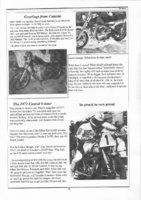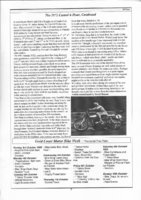Well sounds like the typical pro-Jap anti-British rubbish that was typical of the early 70s period especially in Britain, and I would be willing to put money that those were British writers, in typical self hating fashion that is all telltale of the left-wing rise in the UK of the 60-70s, the Jap bikes certainly catered for the working man compared to the Brit industry..[/QOUTE]
It was a race in Australia and covered in, i presume, the Australian edition of 2 wheels, by , I presume, an Australian author. Was the author typically pro Jap, no idea and i didn't see that in the article.. I didn't post intending to upset any one but it seems i may have offended your British heritage. Sorry..........The poster of the original article into the XS650 club magazine did also contribute some of his on words on the first page.
I note as well it said that Triumph had a chance of "pulling it off again" until the broken main shaft and that only a few Brit bikes entered according to the author, no mention of Jap break downs, tut tut.
Yea, mentions the quality of the Bonnie and the fact it won the previous year. A race is won on reliability, and if you read to the end it goes on to say how unreliable a jap manufacturer was and some associated problems with the bikes.
The 650 Bonneville was lighter and a better handler than all of its Jap counterparts, so while the CB750 is a more powerful bike, it is a complete pig when not driving in a straight line for example. No doubt why the Bonnie 650s still often got the better of them often on long events right up until the collapse of the industry..
I never questioned the difference in quality the Triumph had in racing compared to Jap bikes. I posted the article to show that maybe, just possibly, the XS650 was competitive in its day. A Triumph was a good bike but it did have reliability problems. I don't know why you got so upset, if you want an old Triumph go and buy one.
There is a brace that can be welded across the frame, above the swing arm pivot, from one side to the other and connecting to the the main down tube. It is welded in the three points but has to be done with the swing arm in place, and makes it tricky to remove and replace the swing-arm. Used to have a pic of it but have lost it in reshuffles.



